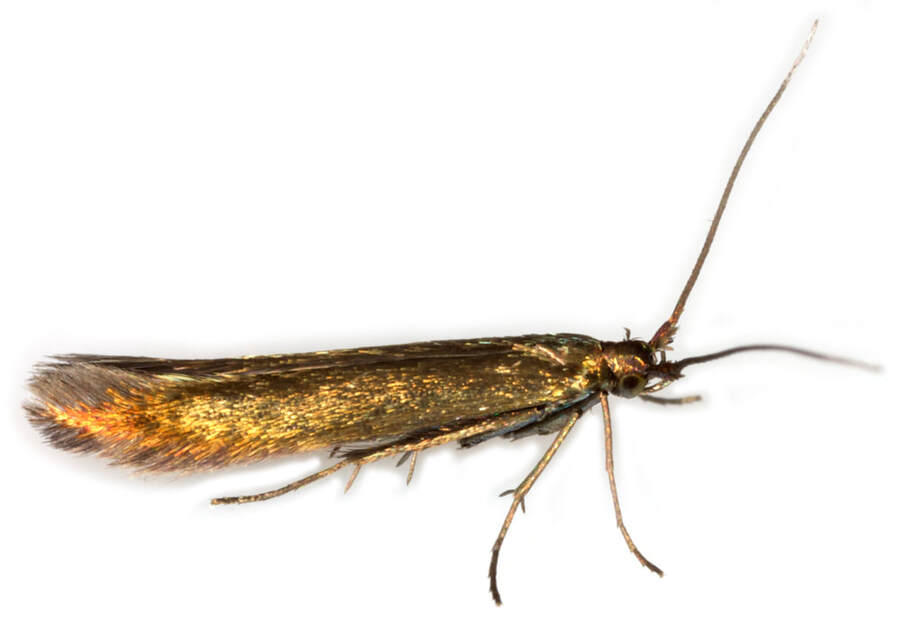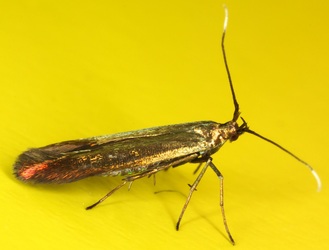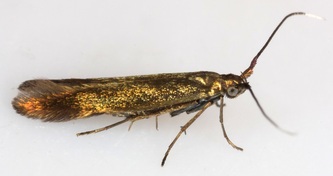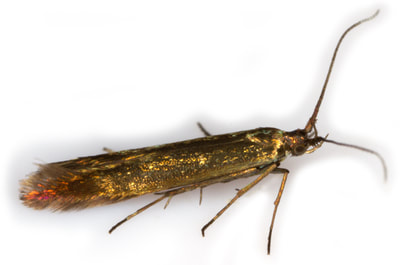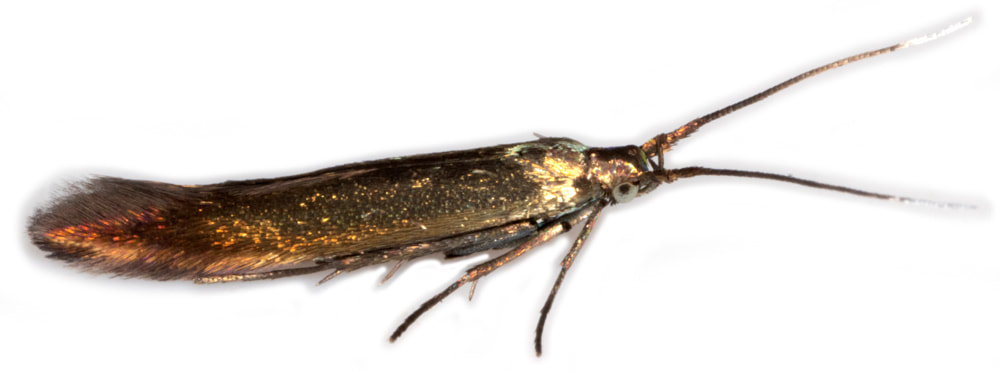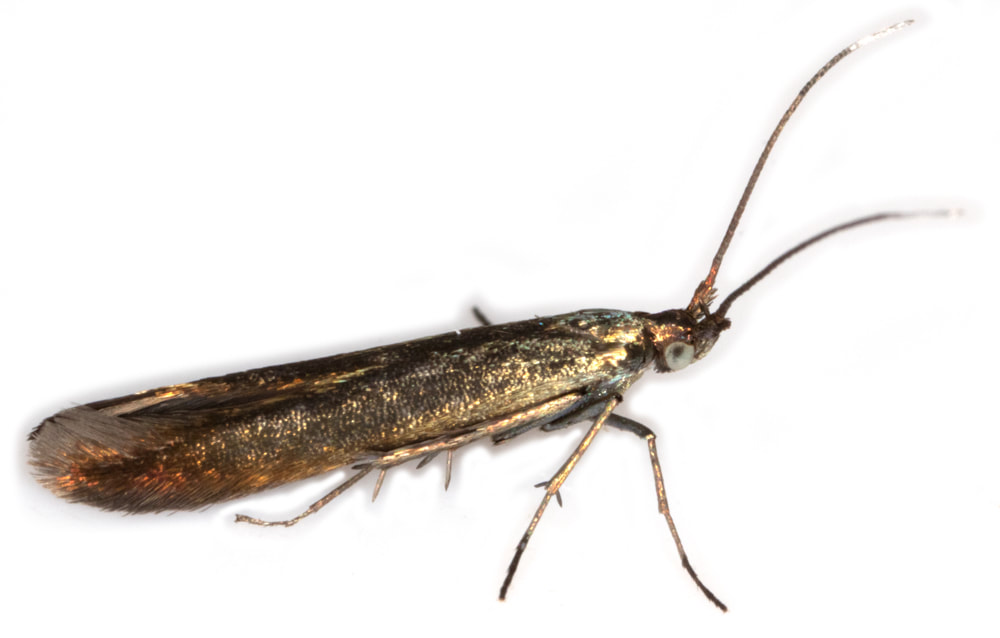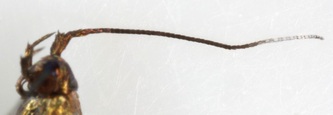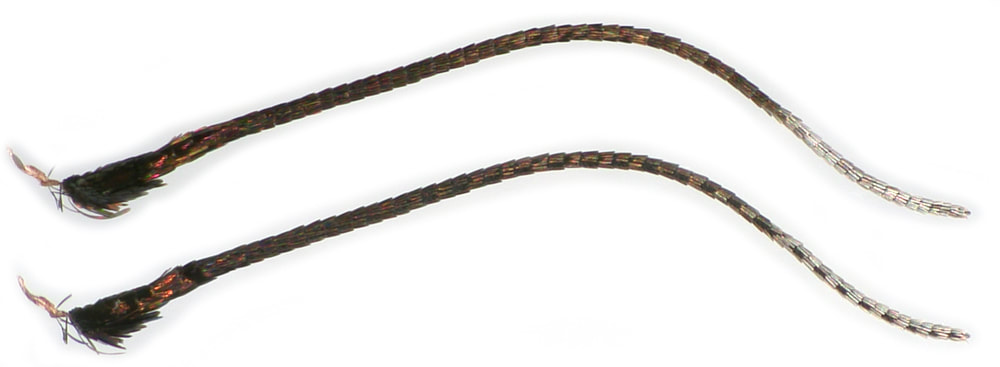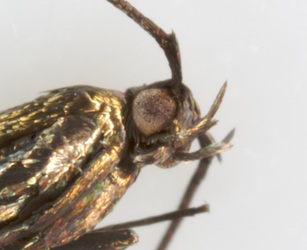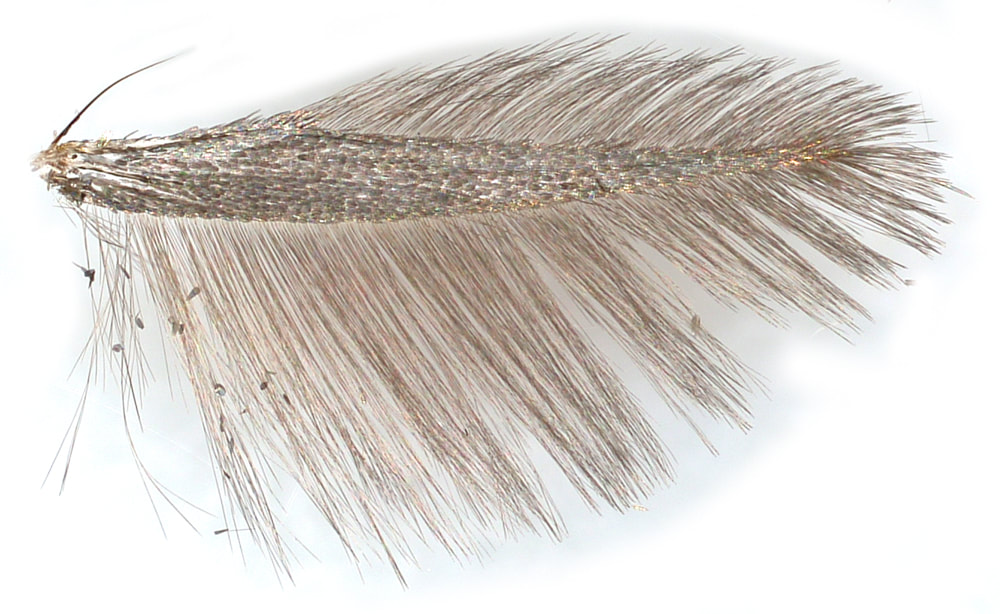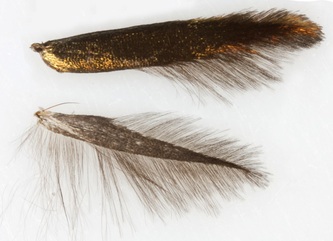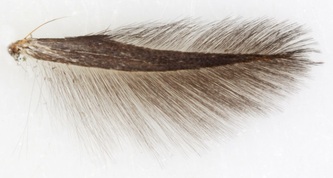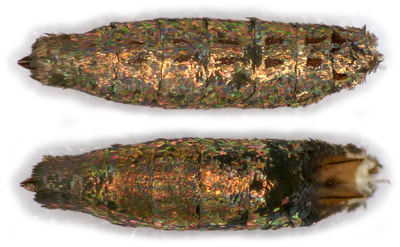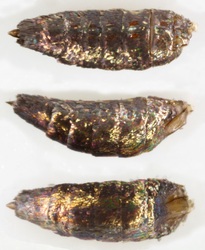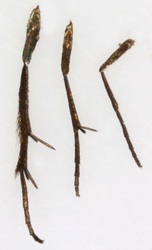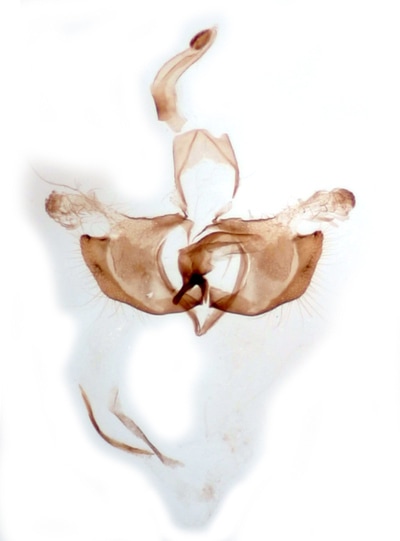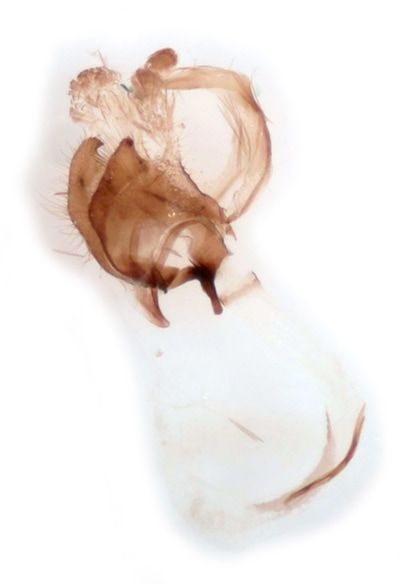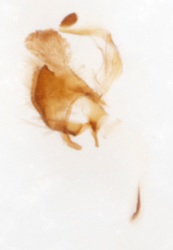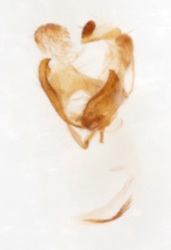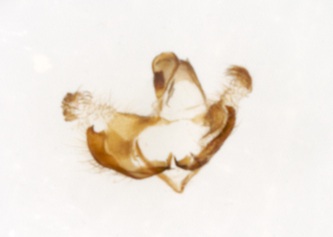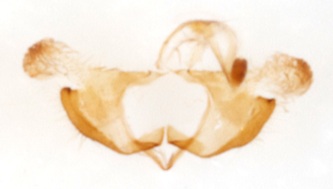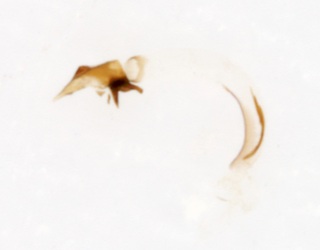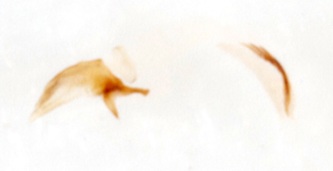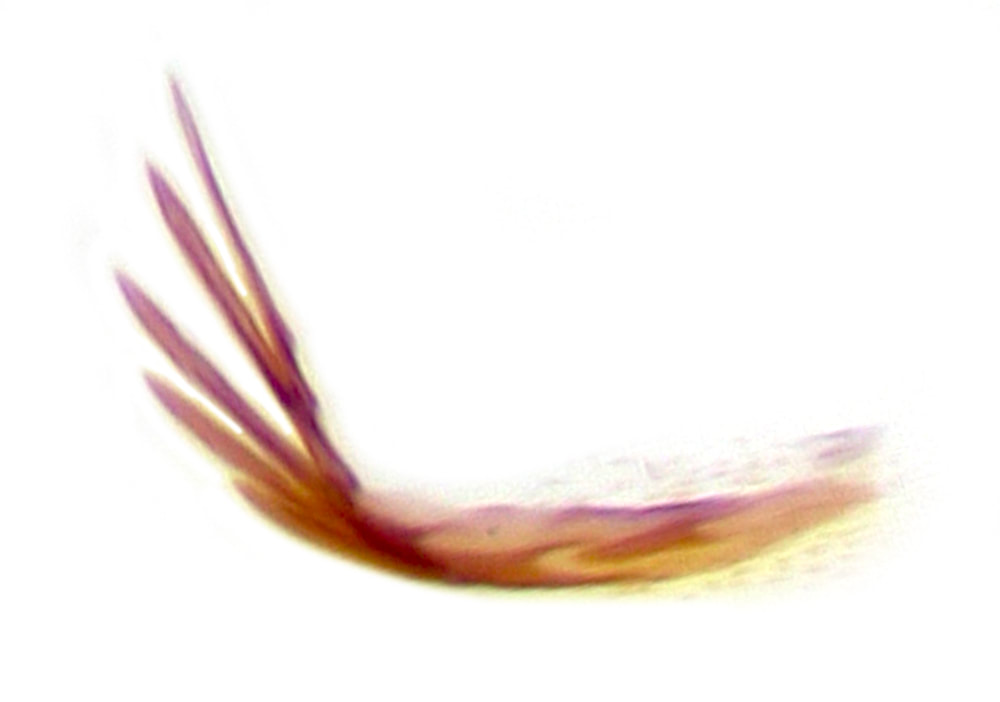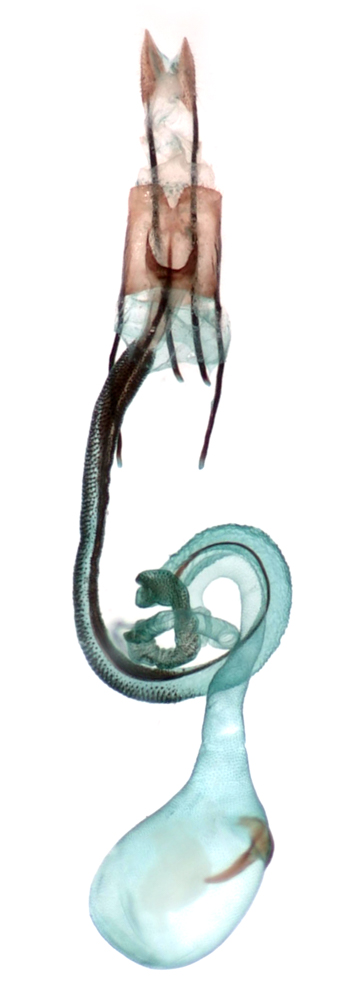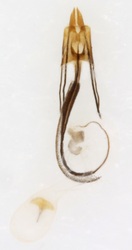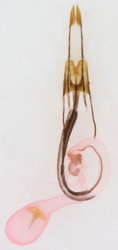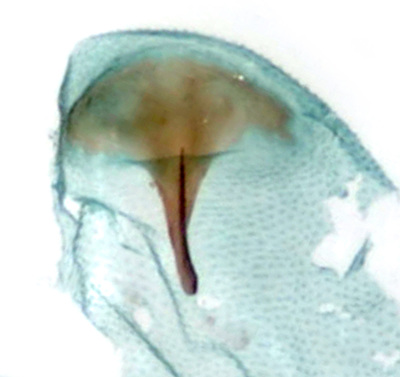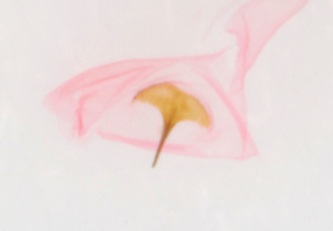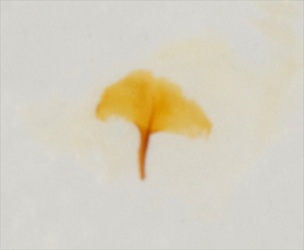37.035 Coleophora alcyonipennella (Clover Case-bearer)
ws: 11.5-14.5mm; bivoltine May-Jun, Jul-Aug; white clover (Trifolium repens); fairly common in SE.England, scattered elsewhere in UK.
Formerly considered conspecific with C.frischella and C.deauratella
Formerly considered conspecific with C.frischella and C.deauratella
|
§1 Cyffdy Farm, Gwynedd; 21/05/2010; male; fw 6.2mm
§2 Foulness, Essex; female; 03/09/2011; fw 6.2mm §3 Westcliff-on-sea, Essex; 25/08/2009; female; fw 6.0mm §4 Foulness, Essex; 05/08/2012; male; fw 5.8mm §5 Foulness, Essex; 15/08/2015; male; fw 6.0mm; to light §6 Westcliff-on-sea, Essex; 24/08/2016; female; fw 5.3mm; to light §7 Foulden Common, Norfolk; 06/06/2016; male §8 Strumpshaw Fen, Borfolk; 16/05/2017; male; fw 6.0mm; to light §9 Westcliff-on-sea, Essex; 03/07/2022; female; fw 6.1mm §10 Foulness, Essex; 09/07/2022; male; fw 7.0mm All images © Chris Lewis |
§11 New Forest, Hampshire; 30/05/2023; male; fw 5.8mm
|
Page published Mar 2011 | §4 added 09/02/2013 | §5 added 26/08/2015 | §6 added 14/11/2016 | §7 added 04/06/2017 | §8 added 04/04/2018|
§9 added 27/11/2022 | §10 added 14/12/2022 | §11 added 06/06/2023
§9 added 27/11/2022 | §10 added 14/12/2022 | §11 added 06/06/2023
